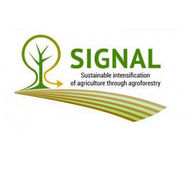Tree-distance and tree-species effects on soil biota in a temperate agroforestry system (2023)
Vaupel A., Bednar Z., Herwig N., Hommel B., Moran-Rodas V., Beule L.
Plant and Soil, (),
doi:10.1007/s11104-023-05932-9
Abstract
Abstract Aims Cropland agroforestry systems are land-use systems with numerous environmental advantages over monoculture croplands including promotion of soil life. This study aimed to investigate tree-species and tree-distance effects on soil biota in a temperate agroforestry system. Methods Our study was conducted at a paired alley-cropping and monoculture cropland system. The tree rows of the agroforestry system comprised of blocks of poplar Fritzi Pauley, poplar Max 1 or black locust. Within the agroforestry system, soil microbial and earthworm communities were collected along transects spanning from the center of the tree rows into the crop rows. Archaea, bacteria, and fungi were quantified using real-time PCR. The community composition of fungi and earthworms was deciphered using amplicon sequencing and morphological identification, respectively. Results Tree rows promoted the abundance of bacteria and earthworms, which we attribute mainly to tree litter input and the absence of tillage. Fungal community composition was altered by the tree rows, resulting in an increased proportion of ectomycorrhizal fungi in the tree-row associated mycobiome. The proportion of Blumeria graminis, the causal agent of powdery mildew, increased with increasing distance from the trees. We suggest that enhanced microbial antagonism, increased earthworm densities and/or altered microclimate contributed to the suppression of B. graminis in vicinity of the trees. Tree-species effect had a minor influence on the abundance and composition of soil communities at our study site. Conclusions In comparison to monoculture cropland, agroforestry benefits the abundance, diversity, and function of soil biota and may enhance soil suppressiveness.